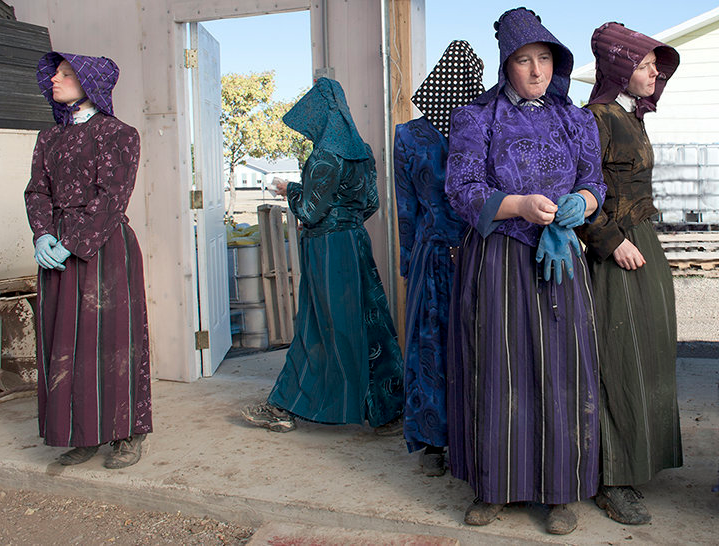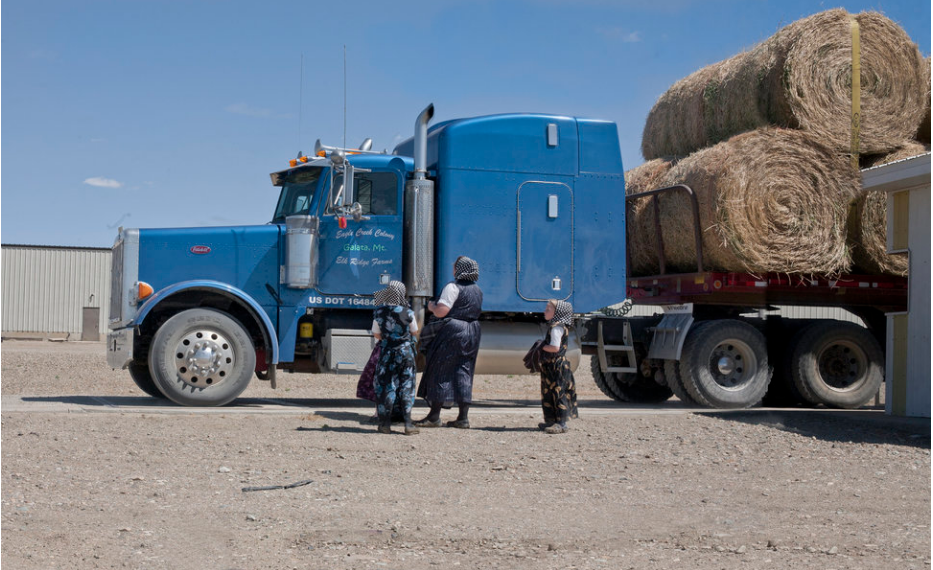![]()

After spending just one day with the Hutterites of Liberty County, Montana, Jill Brody recalls she was “hooked.”
The educator and photographer learned of the reclusive ethnoreligious group while researching a book on ranch life in central Montana. Locals told her that if she wanted to see what good farming looked like, she ought to visit the Hutterites.
That advice would change the way she thought about life and inspire a portfolio of photos titled “Hidden in Plain Sight,” which captures the world within these small, ultra-traditional religious communes.
The Hutterites were not Brody’s first exposure to people from isolated rural areas. At a young age, she had traveled from New York to North Carolina to attend summer camp.
“There were all these nice Jewish kids from New York, and most of the counselors were from the Deep South,” she said. Many of them had limited education, which Brody said she and her youthful peers mistook for a lack of intelligence.
With age and experience, Brody came to realize that she had misjudged them and the wisdom and ingenuity demanded by rural life. “They were pretty amazing people,” she said.
Decades later, she found herself living and working among some other pretty amazing people in one of America’s most isolated communities.

The Hutterites are Anabaptists ― Christians who believe people should be baptized not as infants but only when they are old enough to confess their sins and choose baptism for themselves. They fled persecution in Austria during the Protestant Reformation and eventually ended up living across parts of North America’s Great Plains. According to National Geographic, there were roughly 40,000 Hutterites living in 480 colonies in the U.S. and Canada as of 2012.
The group is named for a 16th century leader, Jakob Hutter, who preached the tenets of pacifism and communal living. Nearly all property in a Hutterite colony is owned by the colony ― a practice that differentiates them from other rural religious communities, such as the Amish and Mennonites.
Their guiding doctrine comes from a verse in the New Testament. Acts 2:44 reads: “All the believers live together and have everything in common.”
Unlike the Amish, the Hutterites utilize various forms of modern technology. They generally sustain their communities through industrial agriculture, selling frozen meat, chicken, eggs, milk and vegetables to large local grocery chains.







 Music industry consultant and publicist Ginny Shea has garnered international exposure for her clients through radio and video promotion, print media, and her vast industry network.
Music industry consultant and publicist Ginny Shea has garnered international exposure for her clients through radio and video promotion, print media, and her vast industry network.
